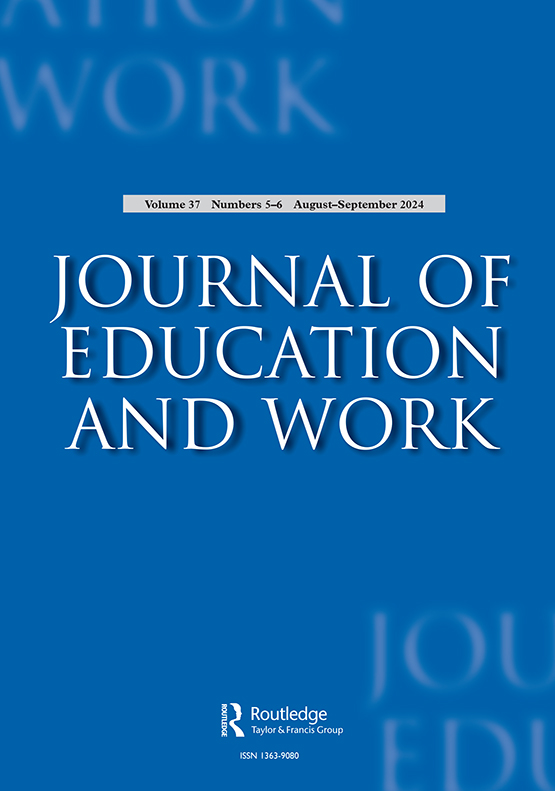WFRC Co-Director Professor Dan Ashton, along with a wider editorial team (see below), are seeking contributions for a special issue for the Journal of Education and Work, entitled Creating the future? Creative education and the future of work. This special issue invites reflections on the current crisis in creative education and the implications for the future cultural and creative workforce.
Background:
In the British context, a series of damning publications has identified a crisis point for the current state of creative education (Durham Commission 2019; CFA 2024; PEC 2024). This crisis has resulted from multiple factors; the decline in arts and creative based subject provision across primary and secondary level education; policy rhetoric that devalues arts and creative-based education at the tertiary level; the instrumentalization of economics and the economic value of creative education (Ashton 2023); pressures on education and outreach teams in cultural institutions; and the decimation of funding to local government resulting in the reduction of cultural provision. The Making the Creative Majority (Comunian et al., 2023) policy report identified the scale of this crisis as panning all learning stages from early years access to postgraduate education.
The crisis is not confined to any one part of the sector. The struggle for arts rich schools (Thomson and Hall 2023) in the face of education cuts and policy hostility; inequalities in the under and post-graduate creative cohorts raise questions about the future diversity and inclusion of the creative workforce; and controversy over poor career prospects means the link between creative education and labour markets is a pressing question. Concerns over the sustainability of the relationship between creative education and work is exacerbated by discussions of the diversity, or lack thereof, across the cultural and creative workforce. This subject has received public attention, particularly in relation to the question of social class and access to cultural and creative opportunities (see Who is ‘working class’ and why does it matter in the arts? | Inequality | The Guardian)
In addition, this crisis is not confined to the UK. In the US, the future of creative subjects is in doubt in many States, both at school and college level. Research from Europe has considered how the HE ‘employability’ directive, as determined through the Bologna process has pushed European HEIs towards instrumentalising the economic value of education (Sin and Neave 2016). The European League of Institutions in the Arts (ELIA) has published research on inequalities in relation to access to art school and employability across their network (2019). This considerable political and public discussion over the extent, nature and impact of this crisis opens the space for a critical intervention.
Despite concerns, levels of creative students in many HE systems are historically high. Creative arts subjects are valued in elite educational settings and governments around the world trumpet the potential of a creative economy staffed by graduates. In this context there is a rich opportunity for research that relates to this moment of seeming crisis.
The issue is keen for submissions theorising the place, purpose and future of creative education.
We particularly encourage submissions that relate to:
- The relationship between creative education and work in the creative economy.
- The role of creative education in creative ecosystems.
- Access to creative education, both informal and formal.
- Spatial, racial and class-based inequalities across creative education.
- The stratification of creative education, from primary to tertiary levels.
- The role/purpose of creative Higher Education.
- How creative and arts-based subjects are taught/measured in schools.
- STEM vs. STEAM.
- Government and advocacy-organisation talent schemes, resources, and campaigning
- Creative practitioners within school education.
- The opportunities, challenges and barriers for creative education associated with emerging technologies.
Please submit an abstract/proposal (max 300 words) along with a brief biographical note to Tamsyn Dent, tamsyn.dent@kcl.ac.uk, by 8th September 2025.
Timeline:
| Stage | Deadline |
| Circulate SI | June, 2025 |
| Deadline for abstracts | 8th September, 2025 |
| Confirmed invites | Mid-September, 2025 |
| Deadline for draft submission | End-November, 2025 |
| Feedback on drafts | End-January, 2026 |
| Respond to feedback and submit via journal | End-April, 2026 |
Editorial Team:
Dan Ashton is Professor of Cultural and Creative Industries at Winchester School of Art, University of Southampton (UK). His research and teaching have examined student transitions from higher education into work and the creative economy. This research has been in the British Journal of Sociology of Education, Education + Training and Journal of Education and Work. His is also the co-editor of Cultural Work and Higher Education (2013) and a special issue of Arts and Humanities in Higher Education’ (2023).
Dr Tamsyn Dent is a Lecturer in Cultural Work, King’s College London. Her work explores labour markets and skills development in creative economies. She was one of the lead authors and part of the editorial team for both research reports linked to the UK Government All-Party Parliamentary Group on Creative Diversity: Creative Majority (2021) and Making the Creative Majority (2023).
Dave O’Brien is Professor of Cultural and Creative Industries at the School of Arts, Languages and Cultures, University of Manchester. He is currently on a research secondment to the UK’s Department for Culture, Media and Sport.
Dr Pat Thomson PSM FAcSS is Professor of Education, University of Nottingham and University of South Australia. She currently edits two book series, Rethinking Educational Management Administration and Leadership and the Insiders’ Guides to Success in Academia (both Routledge). She recently conducted the research for the APPG on Art Craft and Design report, Art Now (2022) and is a Senior Evidence Advisor to the Cultural Learning Alliance.


